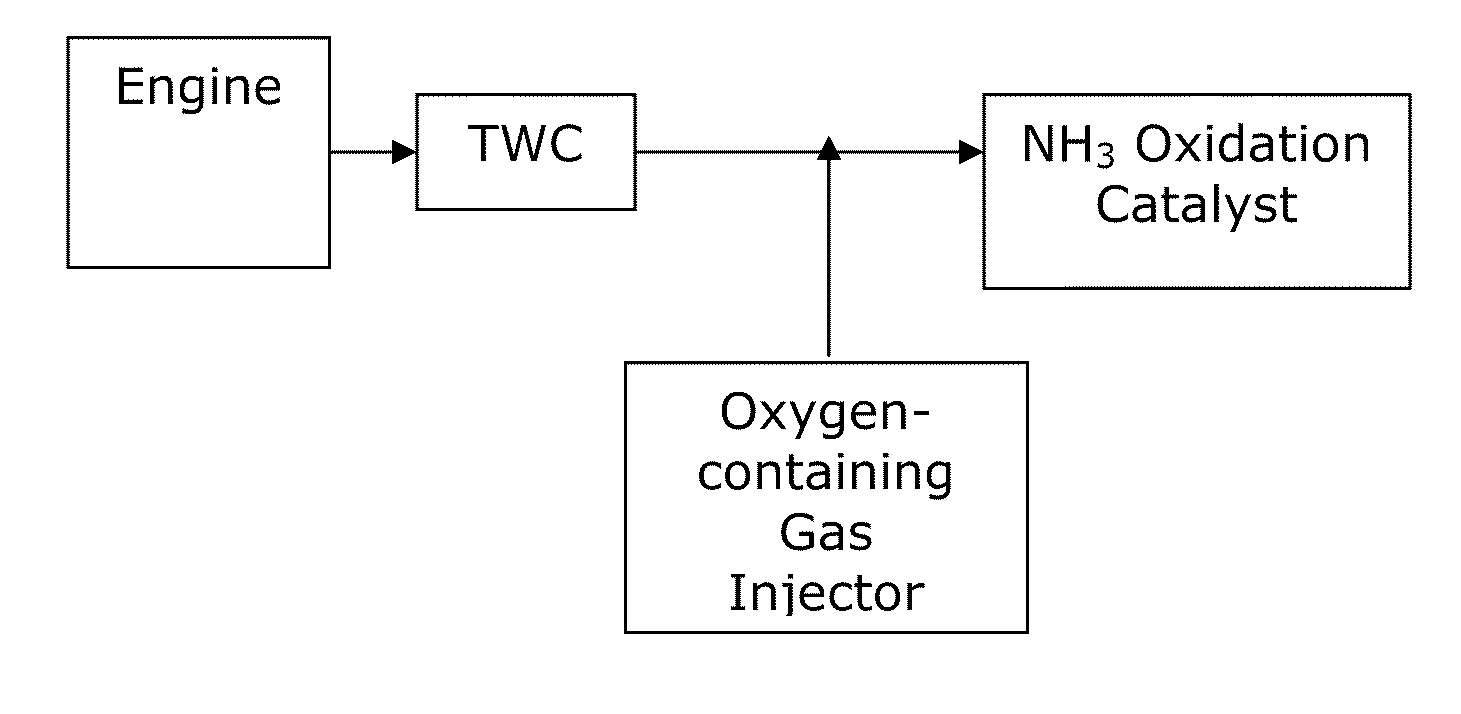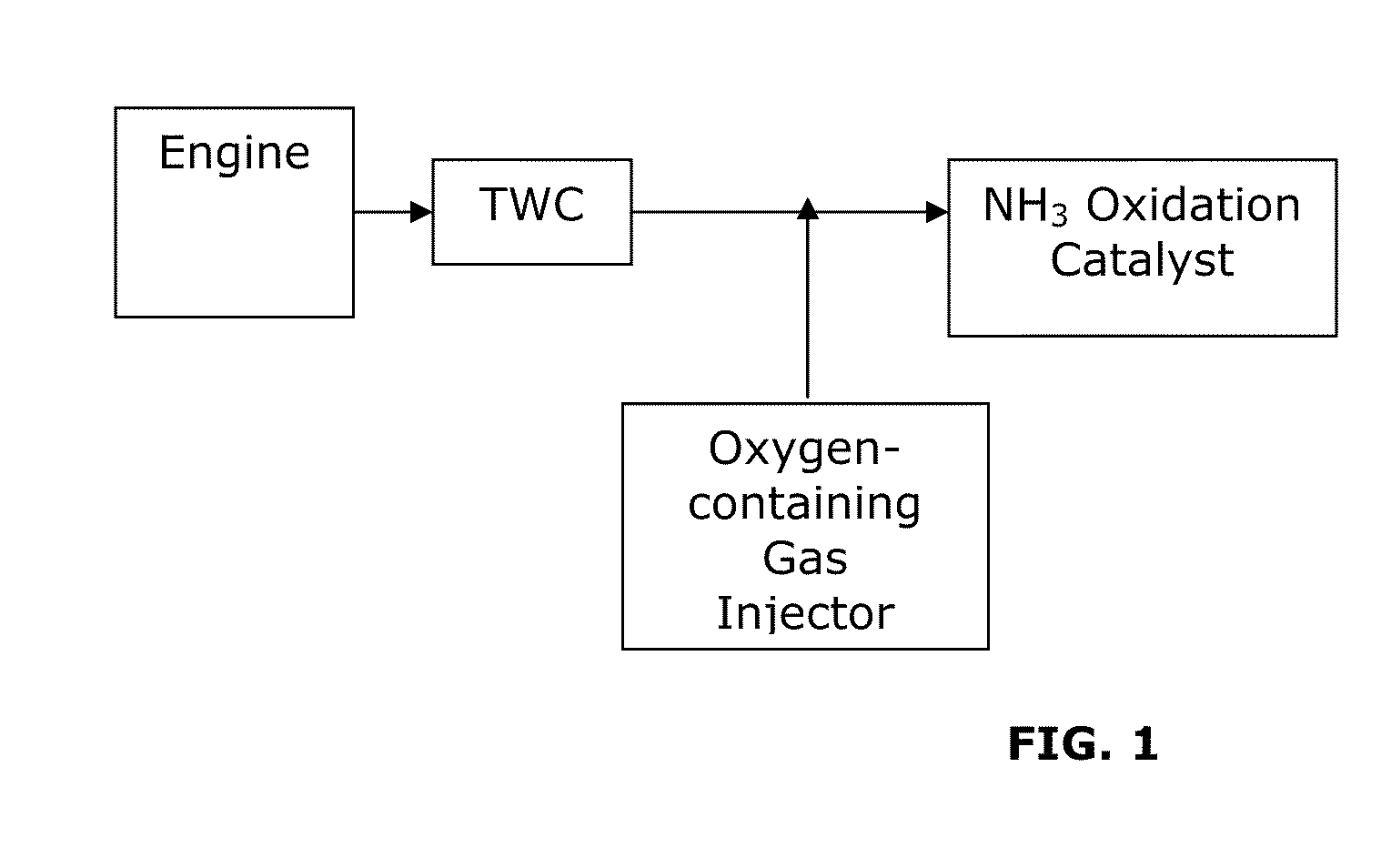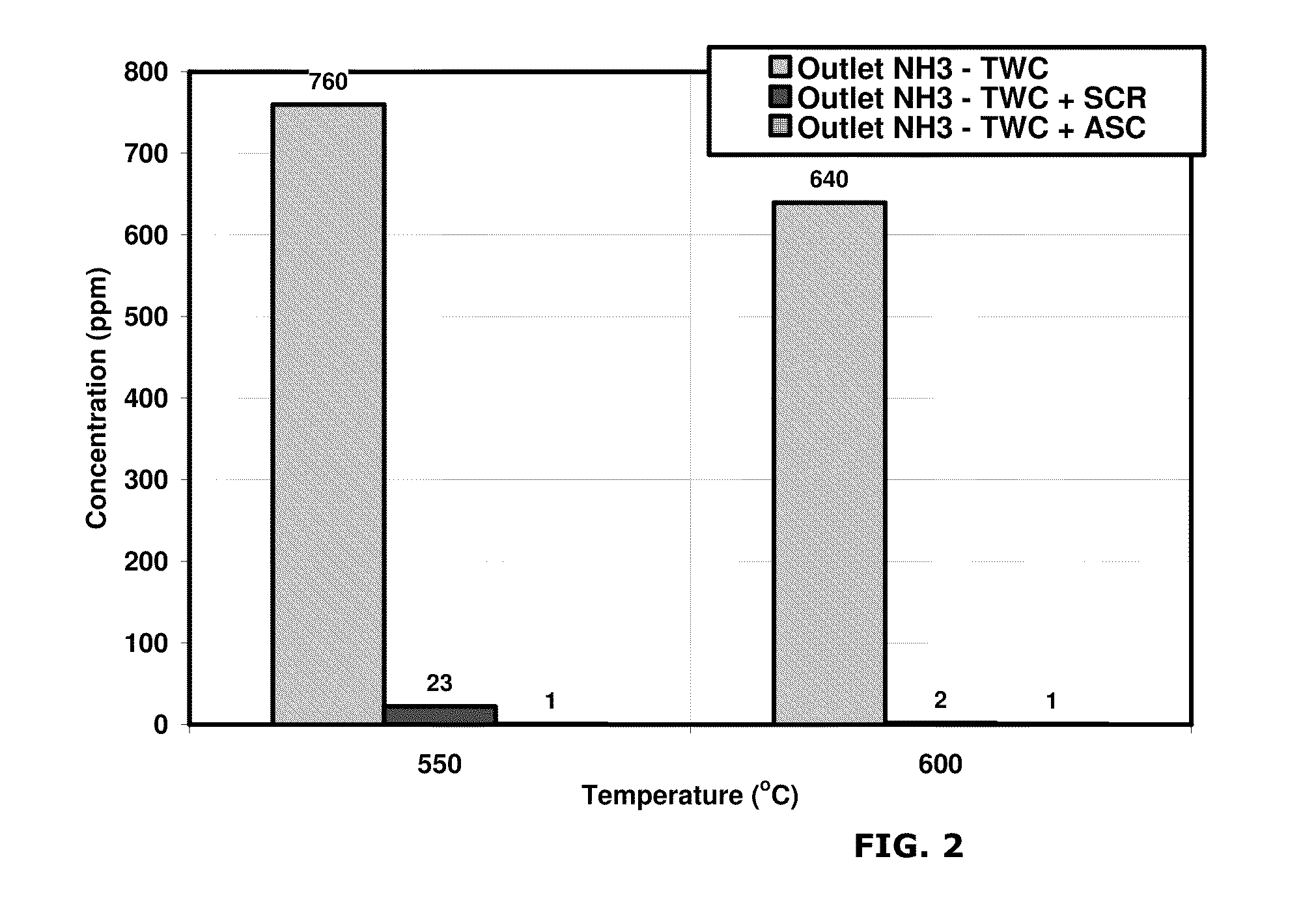Catalysts for the reduction of ammonia emission from rich-burn exhaust
a catalyst and rich-burning exhaust technology, applied in metal/metal-oxide/metal-hydroxide catalysts, metal/metal-oxide catalysts, combustible gas purification/modification, etc., can solve the problem of system exceeding nosub>x /sub>regulation, generating nh/sub>3/sub>emission, etc., to achieve the effect of reducing ammonia (nh3) emission and high selectivity
- Summary
- Abstract
- Description
- Claims
- Application Information
AI Technical Summary
Benefits of technology
Problems solved by technology
Method used
Image
Examples
example 1
[0056]A test was performed to measure ammonia (NH3) emissions and nitrogen oxide (NOx) emissions from a comparative system and systems of the invention. A comparative system containing a three-way catalyst (TWC) was compared with a system including a three-way catalyst and an NH3 oxidation catalyst (TWC-AOC system), according to one embodiment of the present invention, and a system including a three-way catalyst and a multi-layer NH3 oxidation catalyst system containing an ammonia slip catalyst (TWC-ASC), according to another embodiment of the present invention. The multi-layer NH3 oxidation catalyst system included a first layer (i.e., top-layer) of a small pore molecular sieve supported transition metal catalyst and a second layer (under-layer) of a platinum group metal catalyst. Specifically, Cu / SAPO-34 was used as the top-layer and platinum was used as the under-layer of the multi-layer NH3 oxidation catalyst. In particular, the catalyst layers were coated along the walls of a f...
example 2
[0059]A test was performed to compare the effect of transition metal loading on the emission reduction capabilities of the small pore molecular sieve catalyst. Copper was employed as the transition metal. A comparative system containing a three-way catalyst (TWC) was compared with a system according to the invention including a three-way catalyst and NH3 oxidation catalyst (TWC-AOC system) having a 2.5% copper loading and a system according to the invention including a three-way catalyst and a three-way catalyst and NH3 oxidation catalyst (TWC-AOC system) having a 4.2% copper loading. Specifically, Cu / SAPO-34 is used as the NH3 oxidation catalyst.
[0060]The space velocity of the gas flow was 100,000 hr−1 at the TWC catalyst and 50,000 hr−1 at the NH3 oxidation catalyst. The exhaust gas at the inlet to the TWC catalyst comprised: 1410 ppm C3H8 as C1, 0.45% CO, 0.15% H2, 2700 ppm NO, 0.25% O2, 10% CO2, 10% H2O, with the balance comprising N2. The lambda value of the exhaust gas at the ...
example 3
[0062]A test was performed to compare the effect of temperature on emission reduction capabilities of the small pore molecular sieve catalyst. Copper was employed as the transition metal. A comparative system containing a three-way catalyst (TWC) was compared with a system according to the invention including a three-way catalyst and NH3 oxidation catalyst (TWC-AOC system) having a 4.2% copper loading. Specifically, Cu / SAPO-34 is used as the NH3 oxidation catalyst.
[0063]The space velocity of the gas flow was 100,000 hr−1 at the TWC catalyst and 50,000 hr−1 at the NH3 oxidation catalyst. The exhaust gas at the inlet to the TWC catalyst comprised: 1410 ppm C3H8 as C1, 0.45% CO, 0.15% H2, 2700 ppm NO, 0.25% O2, 10% CO2, 10% H2O, with the balance comprising N2. The lambda value of the exhaust gas at the TWC catalyst was calculated as 0.9905, while the lambda value of the gas at the NH3 oxidation catalyst, after the injection of the oxygen-containing gas, was calculated as about 1.022. 0...
PUM
| Property | Measurement | Unit |
|---|---|---|
| temperature | aaaaa | aaaaa |
| temperatures | aaaaa | aaaaa |
| temperature | aaaaa | aaaaa |
Abstract
Description
Claims
Application Information
 Login to View More
Login to View More - R&D
- Intellectual Property
- Life Sciences
- Materials
- Tech Scout
- Unparalleled Data Quality
- Higher Quality Content
- 60% Fewer Hallucinations
Browse by: Latest US Patents, China's latest patents, Technical Efficacy Thesaurus, Application Domain, Technology Topic, Popular Technical Reports.
© 2025 PatSnap. All rights reserved.Legal|Privacy policy|Modern Slavery Act Transparency Statement|Sitemap|About US| Contact US: help@patsnap.com



